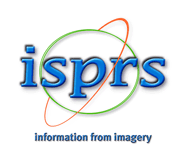Neural network algorithm based on reinforcement learning for vectorization of aerial and space images
Keywords: Deep learning, Reinforcement learning, Vectorization, Remote sensing images
Abstract. This paper presents a novel reinforcement learning (RL) framework for automated vectorization of high-resolution aerial imagery, addressing key challenges in geospatial analysis through adaptive feature extraction and sequential decision-making. Our hybrid architecture combines a modified ResNet-50 backbone with atrous spatial pyramid pooling (ASPP) for multi-scale feature extraction and bidirectional GRUs for spatial context modeling, integrated with a dueling double DQN agent that optimizes vectorization through reward-driven policy learning. The proposed method demonstrates significant improvements over conventional approaches, achieving about 10% increase in mean Intersection-over-Union (mIoU) on the CrowdAI Mapping Challenge dataset while reducing processing time by 29% through optimized RL-based decision sequences. A multi-component reward system balances geometric accuracy (boundary F1-score: 0.79), topological correctness (94.1% Cycle Consistency and 93.4% Junction Accuracy), and computational efficiency, enabling robust performance across diverse urban and rural landscapes. This work establishes a new paradigm for adaptive geospatial vectorization that combines deep learning’s representational power with RL’s sequential optimization capabilities.





